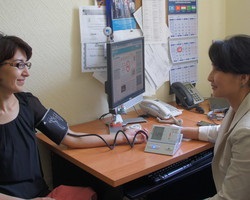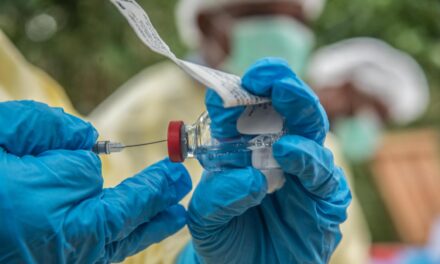A recent study led by researchers at Johns Hopkins Medicine reveals that common arm positioning during blood pressure (BP) screenings can significantly overestimate results, potentially leading to misdiagnoses of hypertension. The findings, set to be published in JAMA Internal Medicine on October 7, highlight the critical role of proper arm support during BP measurement.
The study examined three different arm positions commonly used during BP checks: arm supported on a desk, arm resting on a lap, and an unsupported arm hanging at the side. Researchers found that systolic BP, the top number in a reading, was overestimated by nearly 4 mmHg when the arm was resting on a lap and by almost 7 mmHg when the arm was left unsupported. These findings underscore the importance of adhering to clinical guidelines, which recommend firm support for the arm on a desk or table to ensure accurate readings.
Dr. Tammy Brady, senior author of the study and vice chair for clinical research in the Department of Pediatrics at Johns Hopkins University School of Medicine, emphasized the importance of this discovery. “Arm position makes a huge difference when it comes to accurate blood pressure measurement,” she said, stressing the need for healthcare providers to follow guidelines more strictly.
Blood pressure is a crucial metric in diagnosing hypertension, a condition affecting nearly half of U.S. adults, according to the American Heart Association. Hypertension, or high blood pressure, can increase the risk of heart attacks, strokes, and other serious cardiovascular conditions if left untreated. However, early and accurate detection through regular screenings is essential for managing the condition.
Current clinical guidelines emphasize several steps for obtaining an accurate blood pressure reading, including using an appropriate cuff size, ensuring the patient’s feet are flat on the floor, and positioning the arm at mid-heart level with proper support. Despite these clear recommendations, the study found that BP is often measured with inadequate arm support, such as resting on the lap or unsupported at the side. These suboptimal practices may lead to overestimated readings and potential misdiagnosis of hypertension.
The study, which took place between August 2022 and June 2023, involved 133 participants aged 18 to 80. Researchers randomly assigned participants into six groups to test the different arm positions and took multiple measurements using a digital BP device. They found that both unsupported and lap-supported arm positions consistently led to higher BP readings compared to the recommended arm support on a desk.
An unsupported arm at the patient’s side overestimated systolic BP by an average of 6.5 mmHg, which could mean the difference between a normal reading and a diagnosis of stage 2 hypertension. According to study author Sherry Liu, “If you are consistently measuring blood pressure with an unsupported arm, that could lead to misclassification of hypertension, prompting unnecessary medication or treatment.”
The study cautions that the results apply specifically to automated BP devices and may not extend to manual measurements. Nonetheless, the findings serve as a reminder to both clinicians and patients to be vigilant about proper arm positioning during blood pressure checks. Dr. Brady encouraged patients to advocate for themselves in clinical settings and to ensure proper arm positioning when measuring BP at home.
The research was supported by Resolve to Save Lives, with funding from Bloomberg Philanthropies, the Bill and Melinda Gates Foundation, and Gates Philanthropy Partners, including support from the Chan Zuckerberg Foundation.
This study highlights a small but important aspect of hypertension diagnosis, underscoring the need for attention to detail in clinical practices. With nearly half of the adult population at risk of hypertension, ensuring accurate measurements could have a significant impact on public health outcomes.











